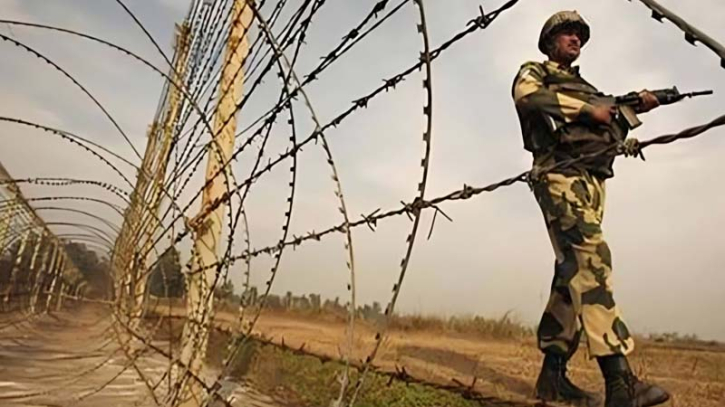A Border Divided: Navigating Tensions Between Bangladesh and India

The Bangladesh-India border, spanning over 4,156 kilometers, has always been more than just a physical demarcation. It is a complex intersection of history, culture, and shared livelihoods. Yet, in recent months, this boundary has increasingly become a flashpoint for disputes that threaten to destabilize the hard-won equilibrium between the two neighbors. For both nations, the stakes are high—economically, politically, and socially. For the people living along the border, it is not just a geopolitical issue; it is about their homes, their lands, and their future.
A Fence or a Wedge
India’s unilateral attempts to construct barbed wire fencing along multiple segments of the border have sparked outrage in Bangladesh. These actions disregard the 1975 Memorandum of Understanding, which explicitly prohibits development within 150 yards of the zero line without mutual consent. While India defends its actions as necessary to curb smuggling and unauthorized migration, the view from Dhaka is starkly different. For Bangladeshis, these construction efforts are a direct affront to sovereignty and an erosion of trust. From Lalmonirhat to Chapainawabganj, these efforts have faced resistance from Bangladesh’s Border Guard (BGB) and local communities. Even within India, the border fence is a polarizing issue. Critics, including former diplomats and academics, argue that the fence undermines the spirit of friendship and cooperation that should define Indo-Bangladesh relations. Some have pointed out the irony of championing ties between the nations while building barriers that physically separate them. Meanwhile, proponents argue that the fence has reduced smuggling and other illegal activities, but these claims often fail to account for the human cost.
To understand the current challenges, one must examine the historical context of the Bangladesh-India border. The partition of 1947, which created East Pakistan (now Bangladesh), laid the foundation for many of today’s border disputes. The Radcliffe Line, hastily drawn and poorly defined, left several enclaves and unresolved territorial claims. Despite the strong cultural and linguistic ties between the two nations, border management has remained a contentious issue. The 2015 Land Boundary Agreement was hailed as a landmark achievement, resolving the status of enclaves and providing clarity on territorial boundaries. However, the agreement also revealed the unequal power dynamics between the two nations, leaving many in Bangladesh feeling that their concerns were secondary to India’s strategic interests.
India’s domestic politics have further complicated the situation. The Bharatiya Janata Party (BJP) has amplified its nationalist rhetoric by spotlighting border security. Visits by BJP lawmakers to inspect fencing sites and engage with the Indian Border Security Force (BSF) serve not only to project strength but also to stoke nationalist fervor. For Bangladesh, this has introduced a new layer of complexity. Political rhetoric in India, often centered around “securing the border,” exacerbates fears of being scapegoated for internal political gain. While nationalism may rally votes, its effects on bilateral ties can be far-reaching and damaging.
The Price of Tension
The implications of this strained relationship extend beyond politics. Border communities bear the brunt of these tensions, with livelihoods disrupted and lives lost. Farmers worry about access to land, traders face increased scrutiny, and families mourn loved ones lost to cross-border violence. Recent altercations, such as the shooting of several Bangladeshi people in the border region, highlight the precarious nature of peace in these areas. Incidents like the killing of Felani Khatun in 2011 highlight the human cost of this barrier. Her tragic death remains a powerful symbol of the suffering caused by the fence. Furthermore, these conflicts are not without economic consequences. Trade between the two nations, valued at billions annually, risks being hampered by diplomatic fallout. The psychological toll on border residents, caught in the crossfire of geopolitics, is equally devastating.
Pathways to Resolution
Resolving these tensions will require a multi-faceted approach rooted in diplomacy, cooperation, and community engagement. Firstly, High-level dialogues must be prioritized to address immediate concerns and rebuild trust. Both nations should reaffirm their commitment to existing agreements and establish mechanisms to prevent future violations. Secondly, Regular communication between the BGB and BSF can mitigate misunderstandings and foster a spirit of collaboration. Joint training exercises and coordinated patrols could serve as confidence-building measures. Thirdly, Border communities should not be collateral damage in this geopolitical tussle. Awareness campaigns and conflict resolution programs can empower residents to act as mediators rather than adversaries. Besides, Unclear territorial demarcations remain a root cause of disputes. Establishing joint committees to conduct detailed surveys can help resolve ambiguities and pave the way for long-term solutions. Finally, Political leaders must exercise restraint in using border issues as election platforms. True security comes not from fences or rhetoric but from mutual respect and cooperation.
The Bangladesh-India border represents both an opportunity and a challenge. While historical disputes and present tensions have strained relations, the potential for cooperation remains immense. By focusing on mutual respect, equitable policies, and community-centric approaches, both nations can transform their border from a point of contention into a gateway for shared prosperity. The time for action is now—for the sake of the millions whose lives and livelihoods depend on peace and stability along this critical frontier. -Source: daily asian age
.png)









